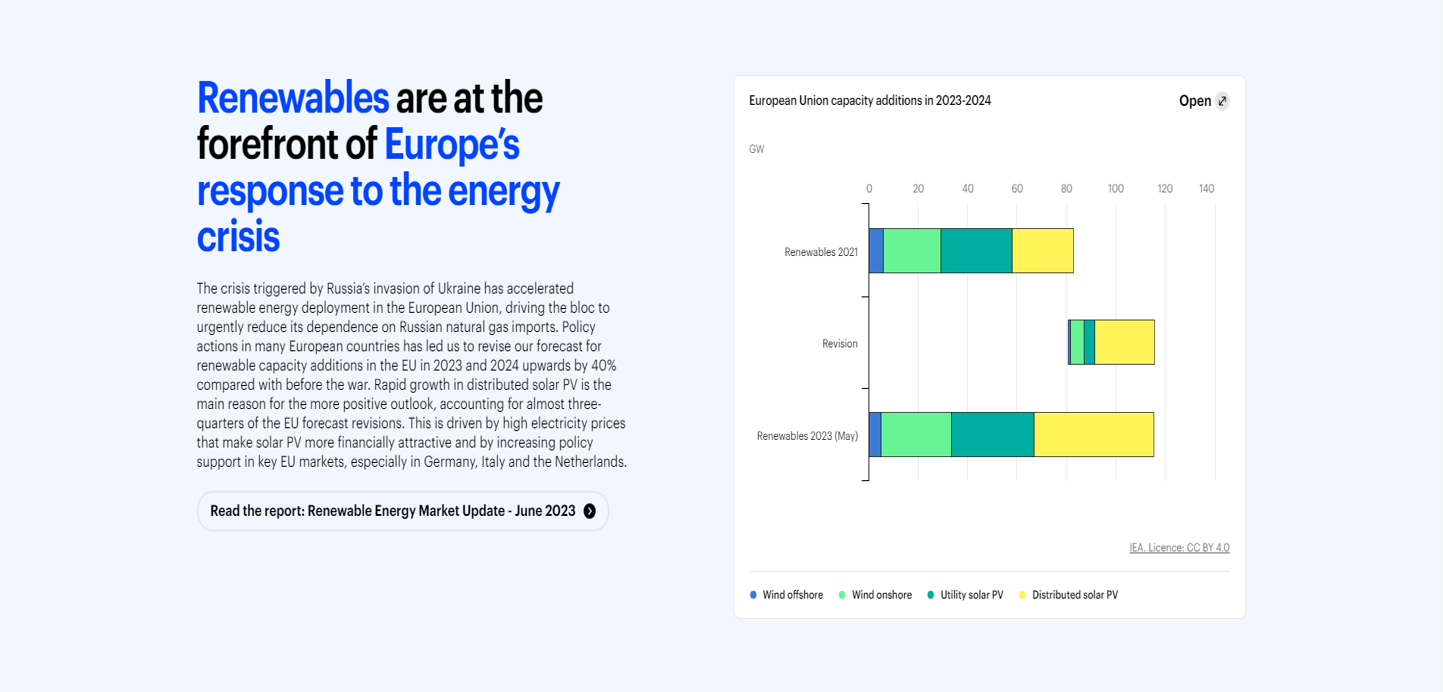International Energy Agency (IEA)
Description
The International Energy Agency (IEA) plays a vital role in facilitating global discourse on energy matters. It offers authoritative analysis, statistics, policy recommendations, and practical solutions to assist nations in ensuring the provision of secure and sustainable energy access for all individuals.
The International Energy Agency (IEA) was established in 1974 with the primary objective of facilitating the coordination of a unified and collaborative reaction to significant interruptions in the global oil supply. Although the maintenance of energy security continues to be a crucial focus of our endeavors, it is noteworthy that the International Energy Agency (IEA) has undergone substantial development and growth since its inception.
The International Energy Agency (IEA) advocates for policies that promote the dependability, affordability, and sustainability of energy through an inclusive approach including all fuel types and technologies. The analysis encompasses a comprehensive range of topics, encompassing renewable energy sources, as well as the supply and demand dynamics of oil, gas, and coal. Additionally, it explores energy efficiency, clean energy technology, electrical infrastructure and markets, access to energy, demand-side management, and several other related subjects.
Since 2015, the International Energy Agency (IEA) has extended its invitation to significant rising nations in order to enhance its worldwide influence and foster collaboration in several areas such as energy security, data and statistics, energy policy analysis, energy efficiency, and the increasing use of clean energy technology.
The International Energy Agency (IEA) has always upheld its initial collective oil emergency response system mechanism, with the primary objective of stabilizing global markets and the overall economy. The initial instance of collective action occurred in January 1991 throughout the First Gulf War, followed by a subsequent occurrence in 2005 subsequent to the detrimental impact of hurricanes Katrina and Rita on oil infrastructure in the Gulf of Mexico. In 2011, a third instance of collective action was undertaken in response to the Libyan Crisis. The mechanism underwent activation on two occasions subsequent to the incursion of Ukraine by Russia in the year 2022.

Gallery

Classifications
Scale of implementation
The IEA is designed to be implemented at a pan-European scale. It provides global energy data, analysis and resources for assessing environmental and energy potential around the globe , covering multiple countries and regions.
Type
The IEA is a web-based platform accessible through a web browser. It operates as an online tool and resource hub for renewable energy data and many other useful information.
Phase of solution
IEA information and data can be used anytime. It provides information and insights to inform decision-making and policy development. It supports users in evaluating the renewable energy potential of specific locations, identifying suitable technologies and policies, and facilitating informed decision-making during the early stages of project development.
Target audience
IEA targets policymakers, government agencies, researchers, project developers, investors, and businesses engaged in renewable energy. It serves as a valuable resource, offering them data, tools, and resources for assessing renewable energy potential, formulating policies, planning projects, and making informed investment decisions.
Key features-functionality
The International Environment Agency provides several essential features and capabilities that facilitate the evaluation and investigation of renewable energy potential on a global scale. Several prominent characteristics and capabilities encompass:
- Environmental information systems are an integral component of the field, and the International Environmental Agency (IEA) offers extensive access to a wide-ranging assortment of such systems.
- There are several data sets and exploratory resources that are accessible. The knowledge activity of the International Energy Agency (IEA) is dependent on the utilization of data of exceptional quality.
- Energy-related policies can be categorized based on many factors such as topic, sector, or kind.
- Comprehensive reporting and rigorous analysis of worldwide data.
References & Sources for Further Reading
- International Energy Agency official site: https://www.iea.org
